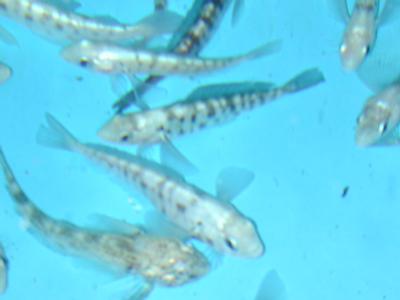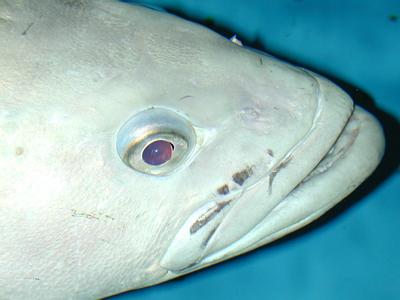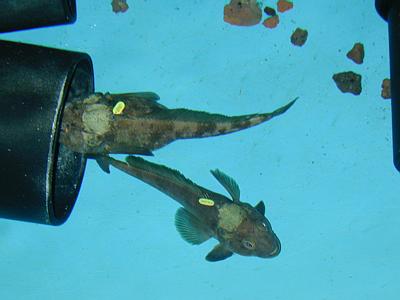4 December, 1999
Molecular genetics of the antifreeze glycoprotein
Freezing avoidance is a trait that has evolved in polar and sub-polar fishes
representing a cold adaptation that is fairly young in origin. Dr. Chris
DeVries used modern molecular biology techniques to find the elusive gene in
the fish genome. She has an interesting theory on how the protein arose and
has recently found evidence in support of her ideas. While this journal
entry may get somewhat technical, it spins an interesting tale of discovery
of the evolution of a new gene from genetic material available. This new
gene gives the fishes a survival advantage in the face of drastic climate
change. Her ideas lend evidence for the genome changing in response to
environmental changes. If this is true, we have first hand evidence of
evolution at work causing change during a short few million years. Think
about the implications of this research on our current understanding of how
evolution works for all organisms, not just fish.
Most of the fish found in he Antarctic waters belong to the sub order
Nototheniodei. They make up 90-95% of the biomass in these waters and more
than 50% of the species living here. The presents of the antifreeze
glycoprotein is thought to be the major reason for their success as the
dominant group. Dr. DeVries has discovered that there are at least 8
versions of the antifreeze protein and not all versions have the sugar
attached. For those that do have sugar, the main structure is a
glycotripeptide of Thr/Ala/Ala with the disaccharide galactose-N attached to
each Thr amino acid. The smallest protein has three repeats and the largest
has 55 repeats. While she found some differences in the DNA sequence, the
same amino acids are put in place to make the antifreeze glycoprotein. Can
you explain how that might be possible?
The AFGPs are encoded in a large gene family. When the protein gets made, a
large polyprotein precursor is made which is then broken down into several
copies of the protein. When one DNA gene is transcribed, it can then result
in several protein molecules being formed. To find the gene, a genomic
library was constructed with liver DNA using a phage vector. The plaque
forming areas were screened using P32. 125 positive clones were found and
several were used for analysis. cDNA, (DNA that is made from an RNA
template) was made using reverse transcriptase of pancreatic RNA. Using
other techniques like PCR, and probing with specific primers, she discovered
that the tripsinogen protein and the antifreeze protein had areas with 80%
similarity in sequence. The areas in common involve the first two exons in
the tripsinogen gene with one intron included. The AFGP intron has a 93%
sequence match with the trypsinogen intron. The 5' end is the same and the
3' end is mostly the same. Dr. DeVries feels that there is now strong
evidence that the primordial gene for AFGP could have arisen from the
trypsinogen gene through a frame shift in copying the DNA. This probably
produced the first small AFGP.
If you want more detailed information about the work of Dr. DeVries, look
for her paper on the "Evolution of antifreeze glycoprotein gene from
trypsinogen gene in Antarctic notothenioid fish" You can find this paper in
the Proceedings of the National Academy of Science, April, 1997, Evolution
The information is also available on the web at http://www.pnas.org

This is one of the other Antarctic fishes with the antifreeze protein in its blood. It is called Borchgrevinchi. By AFGP binding to any ice crystals that do escape earlir detection, ann immune responce is started with macrophages capturing the bound ice crystal. How that crystal is then dealt with is still unknown. Do you have a creative way to look for an answer?

Can you tell why this cod is really called a toothfish? They have a row or razor sharp teeth.

This Bernachii is another AFGP fish. Dr.DeVries is trying to get them to spawn in captivity so that she can study the eggs. She still have lots of questions about where the gene is in the genome. While the fish were ready to spawn and were injected with a hormone to stimulate development of sperm and eggs, nothing happened. Then someone decided to try putting some of the fish into a slightly warmer tank to see if that would stimulate spawning. It did and eggs were laid yesterday and today. The next question is whether they will be fertilized.
Contact the TEA in the field at
.
If you cannot connect through your browser, copy the
TEA's e-mail address in the "To:" line of
your favorite e-mail package.
|
